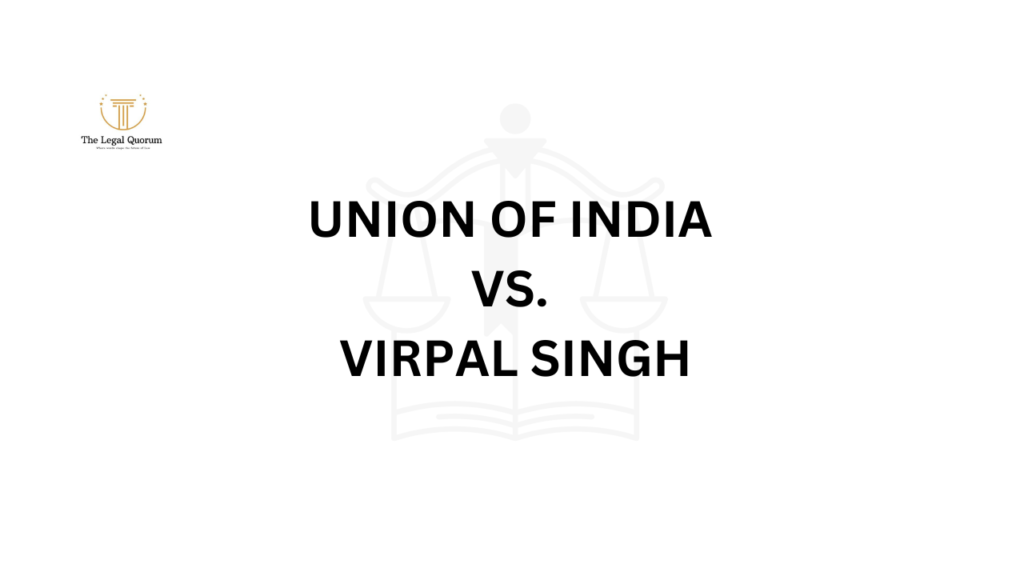Published on 08th August 2025
Authored By: Riddhi Nilesh Joshi
Kirit P Mehta School of Law, NMIMS
Abstract
Custodial deaths have long posed a serious challenge to the Indian criminal justice system, testing its commitment to accountability, due process and the protection of fundamental rights. Despite constitutional guarantees such as Articles 20 and 21, incidents of custodial torture and deaths continue to occur, highlighting persistent gaps between legal standards and ground realities. The recent enactment of the Bhartiya Nagrik Suraksha Sanhita (BNSS), 2023, strengthens procedural safeguards, with Section 176 mandating compulsory magisterial inquiries and the recording of custodial incidents to ensure transparency and accountability. Coupled with judicial pronouncements and institutional reforms, such as the establishment of Police Complaints Authorities, these changes mark a significant step towards addressing systematic issues.
This paper analyzes the evolving legal and institutional framework in India, focusing on the role of BNSS and case laws in shaping accountability and prevention measures. Through case studies and legislative reviews, it argues for the urgent need to bridge enforcement gaps, ensuring a rights-centric approach that upholds the dignity and constitutional protections of every person in custody.
Introduction
Custodial deaths have long been a pressing issue within the Indian criminal justice system, reflecting a serious tension between state authority and individual rights. The term refers to the death of an individual while in the lawful custody of the police or other authorities, often under circumstances suggesting mistreatment, abuse, or lack of due process. Such incidents occur when those entrusted with the duty to protect and produce a person before a court/magistrate fail to safeguard their basic right to life and personal liberty. Despite constitutional guarantees such as Article 20 and 21, which protect every person from arbitrary deprivation of life and ensure fair treatment, instances of custodial death continue to occur across the country,undermining the rule of law and public trust in state institutions.
Recognizing the gravity of this issue, recent legal reforms have attempted to build stronger safeguards. The BNSS now makes magisterial inquiries mandatory under Section 176[1] in cases of custodial death, rape, or disappearance. This measure aims to enforce accountability and provide a credible, independent examination of such incidents. Landmark judicial decisions like Nilabati Behera V. State of Orissa, 1993[2] have further shaped this discourse by affirming the state’s liability for custodial deaths, treating them as grave violations of fundamental rights. Together with institutional reforms like the establishment of Police Complaints Authorities, these advances reflect an evolving legal framework. Yet, the persistence of custodial deaths highlights deep-rooted systematic gaps that must be addressed to retore trust and ensure the dignity and protection of every person in state custody.
Legal Framework and Safeguards Against Custodial Deaths
The Indian Legal system provides a robust yet underutilized framework of safeguards to prevent custodial deaths and hold authorities accountable when such incidents occur. At its core lies the Indian Constitution, which guarantees every person the right to life and personal liberty under Article 21. This fundamental right acts as a foundation for countless judicial pronouncements that have shaped the legal discourse around custodial deaths. The Supreme Court, in landmark judgments like D.K. Basu V. State of West Bengal, 1997[3], laid down mandatory guidelines for arrests and detentions to protect thr rights of individuals in police custody. These guidelines require, among other precautions, the maintenance of arrest memos, medical examinations of detainees and prompt production before a magistrate to ensure accountability at every step. Moreover, the Bhartiya Nyay Sanhita, (BNS), 2023 incorporates penalties for offences related to custodial violence, making suchg acts a matter of serious legal scrutiny. Together, these constitutional guarantees, judicial directions, and legislative provisions form a comprehensive yet challenging framework.
Additional precautions arise from institutional and international standards that deepen the accountability framework. The National Human Rights Commission (NHRC), for instance, has laid down mandatory guidelines for the investigation of custodial deaths, including requirements for post-mortem video recording and prompt judicial inquiries.[4] These efforts are bolstered by international obligations, such the UN Convention Against Torture, which India has signed, underscoring the state’s duty to investigate, punish and prevent acts of custodial violence. Together, these measures extend beyond statutory provisions, aligning national practice with global human rights standards and reinforcing the commitment to transparency and accountability.
Judicial Response and Landmark Cases
The Indian judiciary has acted as a crucial catalyst in shaping accountability for custodial deaths, with its interventions often serving as the only effective bulwark against systemic abuse. One significant case that underscored the gravity of custodial violence was People’s Union for Civil Liberties v. Union of India (PUCL)[5], where the Supreme Court dealt extensively with extrajudicial killings and custodial abuse. The court asserted that any death in custody must be treated as a grave breach of constitutional guarantees, making it mandatory for authorities to register a First Information Report (FIR) and investigate promptly and impartially. This judgment reaffirmed that no person can be deprived of their life and dignity, regardless of their status as an undertrial or convict. Similarly, in In Re: Death of Persons in Police Custody[6], the Supreme Court emphasized that custodial deaths must be met with transparency, accountability, and a fair inquiry. The court advocated the use of special investigation teams and urged state authorities to ensure that instances of custodial abuse are met with the utmost seriousness. By doing so, it laid down the ground rules for independent inquiries and strengthened institutional accountability. These landmark decisions have acted as a catalyst for institutional reforms, reminding enforcement authorities of their constitutional and legal duties. Yet, despite this strong judicial voice, the challenge lies in translating these judgments into concrete action within police stations and prisons across the nation, making judicial scrutiny an ongoing, vital part of safeguarding human rights.
Institutional Reforms and Oversight Mechanisms
While judicial pronouncements have laid down strong safeguards, institutional reforms remain vital for translating these ideals into practice. The establishment of the National Human Rights Commission (NHRC) in 1993 was a pivotal step, creating an independent body to investigate human rights violations, including custodial deaths. The NHRC has consistently advocated for mandatory post-mortem videography, prompt inquiries, and fair compensation to the families of victims, making accountability a central tenet of its mandate.
At the state level, the role of State Human Rights Commissions (SHRCs) has been significant, acting as watchdogs and ensuring that cases of custodial violence do not slip through the cracks. These commissions, supplemented by Police Complaint Authorities and Vigilance Cells, enable closer scrutiny of incidents and help maintain transparency within policing institutions.
Reforms within the police force itself have also evolved. The Model Police Act and recommendations from committees like the Malimath Committee[7] have emphasized the need for sensitivity, training in custodial ethics, and a shift from a culture of aggression to one rooted in accountability. The use of technology — CCTV installations in police stations, body-worn cameras, and digital record-keeping — has further strengthened the oversight mechanism, making instances of custodial abuse more difficult to conceal.
Although much has been done, implementation often lags, especially at the grassroots. True institutional reform demands not only legislative and judicial action, but also a deep-rooted shift in policing culture — one that respects the sanctity of life, protects the dignity of every person, and operates under the firm belief that accountability is not an option, but an obligation.
Future Directions and Policy Suggestions
To eradicate the grim reality of custodial deaths, India must evolve beyond its existing legal and institutional framework. The focus needs to shift towards embedding a culture of accountability and prevention, making human rights an integral part of policing. This shift can be achieved through a multi-pronged approach:
- Mandatory Sensitization Training for Police: Policing needs to evolve from a force-centric approach to a service-centric one.
– Regular, mandatory training programs for officers across all ranks can deepen their understanding of constitutional values and human rights.
– Such training can emphasize respect for dignity, restraint in the use of force, and accountability, making it a core part of police culture. - Strong Whistleblower and Witness Protection Mechanisms: Accountability can only be guaranteed when officers and citizens feel safe to speak out.
– The establishment of robust whistleblower policies can enable junior officers, victims, and their families to raise concerns openly.
– Strengthening witness protection safeguards can ensure that instances of abuse are brought to light, making it harder for perpetrators to bury evidence. - Independent Investigation Units: The establishment of independent investigation units, functioning under the direct oversight of State Human Rights Commissions, can fortify accountability.
– These units must operate autonomously and be adequately resourced.
– Their mandate should include impartial inquiry and timely reporting of instances of custodial abuse and death. - Leveraging Technology for Oversight: Technology can play a pivotal role in curbing custodial violence.
– The widespread installation of CCTV cameras within police stations and corridors can deter mistreatment.
– The use of body-worn camera policies and digital recording of interrogations can further reduce instances of abuse and enable better accountability.
– Coupled with regular external audits, these measures can foster a climate of transparency and trust. - Institutionalized Periodic Reviews: An ongoing review mechanism for custodial death cases needs to be institutionalized.
– This review mechanism should comprise a joint panel of judicial authorities, medical professionals, and civil society representatives.
– The panel can periodically review cases, investigate lapses, and recommend actionable reforms.
– Such institutional scrutiny can serve as an early warning mechanism, making it harder for custodial violence to remain hidden.
In essence, these reforms can catalyze systemic change, moving India from a culture of impunity towards one rooted in integrity, accountability, and a deep-seated respect for the sanctity of life. By making the protection of human rights central to policing, India can redefine its approach to custodial justice and honor its constitutional promise to every citizen.
The Role of Civil Society and Media
Civil society and the media have long acted as vital watchdogs within the Indian democracy, ensuring that instances of custodial death and abuse do not disappear into silence. Together, they have shaped accountability and acted as a catalyst for institutional reforms. Non-governmental organizations (NGOs), activists, and human rights advocates have acted as a moral compass, highlighting systemic failures and pressing for legislative and judicial changes. Through meticulous fact-finding, Public Interest Litigations (PILs), and relentless engagement with courts, civil society has ensured that custodial deaths are treated as serious human rights violations rather than routine incidents buried in bureaucratic files.
The media, too, has acted as a critical counterbalance to state authority. Its role has been pivotal in exposing brutal instances of custodial abuse and prompting institutional scrutiny. The infamous Mathura rape case (1972)[8] became a turning point precisely because activists and journalists refused to stay silent. What began as an isolated, brutal assault inside a police station evolved into a national conversation about custodial rights and gender justice, leading to the landmark 1983 amendments to the rape laws. Similarly, the shocking custodial deaths of Jayaraj and Bennix in Thoothukudi (2020)[9] shook the collective conscience of the nation. The media’s relentless spotlight exposed the brutal reality of the father-son duo being tortured to death, forcing authorities to register FIRs, arrest the guilty officers, and hand the investigation over to the CBI — a rare and significant step towards accountability.
Importantly, civil society and media together have acted as a bridge between marginalized communities and institutional authorities. By documenting instances of mistreatment, rallying public opinion, and creating spaces for dialogue, they have pressed for systemic reforms — from mandatory police accountability boards and witness protection programs to improved CCTV surveillance and medical examination protocols within police stations.
In a democracy like India, where institutional apathy can hamper access to justice, civil society and the media remain indispensable allies. They force authorities to remember their constitutional obligations, making it harder for injustices within the four walls of a police station to remain unseen, unspoken, or unpunished.
Conclusion
Custodial deaths remain one of the gravest injustices in the Indian criminal justice system — a brutal reminder that mere laws and constitutional guarantees are not enough unless implemented with integrity. The judiciary has laid down strong precedents, legislative reforms like the Bharatiya Nyaya Sanhita have introduced tighter penalties, and institutional measures such as the NHRC guidelines have tried to foster accountability. Yet, despite these advances, the challenge lies in bridging the gap between theoretical safeguards and ground-level reality.
What is needed is a collective shift — a commitment from the State, police, civil society, and media — to create an environment where every person is treated with dignity and every death in custody is met with scrutiny. This means embedding transparency within policing through technology, nurturing a culture of accountability within institutions, and reinforcing the role of civil society and media as vital watchdogs. The promise of “rule of law” can only be fulfilled when justice becomes more than an ideal and translates into a lived experience for every citizen, regardless of status. In making custodial death a matter of national concern, and treating it as a breach of the Constitution itself, India can move closer to the vision of a society rooted in accountability, equity, and respect for life.
References
[1] Legal Service India, ‘New Changes in BNSS’, available at https://www.legalserviceindia.com/legal/article-9819-new-changes-in-bnss.html
[2] Nilabati Behera v State of Orissa AIR 1993 SC 1960, available at https://indiankanoon.org/doc/1274270/
[3] D.K. Basu v. State of West Bengal, (1997) 1 SCC 416 https://indiankanoon.org/doc/1197399/
[4] National Human Rights Commission, ‘Guidelines and Instructions about Custodial Deaths/Rapes’ (NHRC, 1995) https://nhrc.nic.in/sites/default/files/Guidelines_Custodial_Deaths_Rapes.pdf
[5] People’s Union for Civil Liberties v Union of India (1997) 3 SCC 433. https://indiankanoon.org/doc/1273569/
[6] In Re: Death of Persons in Police Custody, Suo Motu Writ Petition (Crl) No 1 of 2019 (SC).
[7] Committee on Reforms of the Criminal Justice System (Malimath Committee), Ministry of Home Affairs, Government of India (2003)
[8] Tukaram v State of Maharashtra (1979)
[9] Re Jayaraj & Bennix Custodial Deaths (Madras High Court, Suo Motu W.P. (MD) No. 7042 of 2020)




